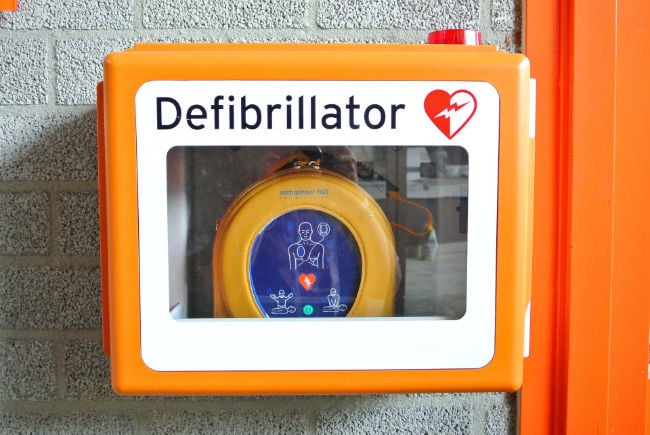Knowing how to perform cardiopulmonary resuscitation (CPR) properly can make all the difference between life and death in an emergency situation. That said, as technology and medicine advance, they lead to new CPR methods and best practices. So, how has CPR changed over the years, and why is it so important for you to know?
The goal of CPR is to restore blood flow to the brain and other vital organs in various emergencies. There are three main types of CPR, each with its own history, variations, and techniques, and each based on the situation and the age of the patient. Knowing which to use in an emergency will give the person you’re helping his or her best chances of survival.
Read on to explore the different variations of CPR throughout history and learn the answer to the question, “How has CPR changed over the years?”.
What Are the Types of CPR?
The first thing to know about CPR is that there are several types — each with its own benefits and uses, depending on the emergency situation and the person performing CPR. When used appropriately, CPR can provide lifesaving help to victims of cardiac arrest, drowning, and drug overdoses.
Hands-Only
Hands-only CPR, the most common type of CPR, involves playing both hands on the center of the patient’s chest and applying pressure to keep the blood circulating in a person whose heart has stopped beating. Chest compressions are one of the most important aspects of CPR.
Chest compressions were first documented as part of CPR in 1891, when German surgeon Dr. Friedrich Maass performed the technique on a human being. This was followed by American surgeon Dr. George Crile in 1903, who reported the first successful use of external chest compressions in human resuscitation.
It is important to note that chest compressions should not be done too quickly or too slowly, as this can cause serious injury to the patient.
Rescue Breathing
Rescue breathing involves providing breaths to the patient in order to keep their blood oxygenated and should be given at a rate of one breath every five to six seconds. This technique is typically used in combination with chest compressions.
Although cases of mouth-to-mouth resuscitation can be traced back to ancient Egypt, it wasn’t until the 18th century that credible reports of its success began to appear in the medical literature. According to ProCPR, rescue breathing was officially developed in the 1950s and adopted by the U.S. military in 1957 to revive unresponsive victims.
The first formalized CPR guidelines were published in 1960; however, in 2008, the AHA also released new recommendations that bystanders skip mouth-to-mouth resuscitation and use hands-only CPR in cases of cardiac arrest.
Automated External Defibrillator
Automated external defibrillators (AEDs) are machines that can be used to deliver an electrical shock to the heart to restore a normal heart rhythm. They’re recommended for use by trained medical professionals and can be used in combination with chest compressions and rescue breathing.
According to AED USA, the first modern defibrillator was invented in 1947 by Dr. Paul Zoll, who founded Physio-Control Corporation. Then, in 1968, Dr. Frank Pantridge developed an improved portable defibrillator that weighed less than seven pounds.
The use of AEDs as part of CPR is now an important part of saving lives in emergency situations, because after approximately three to five minutes in cardiac arrest, irreversible brain and tissue damage begin to occur. It’s essential to note that an AED should only be used if it’s available and if the patient has no signs of life.
How Has CPR Changed Over the Years for Children & Infants?
In 2005 and 2006, respectively, the AHA released guidelines for infant and pediatric CPR, marking a significant step forward for CPR, as techniques were modified to accommodate the size, weight, and proportions of children and infants. It officially adopted these guidelines in 2007.
When performing CPR on an infant or a child, you’ll use a modified version known respectively as infant CPR and pediatric CPR. The main difference between regular CPR and infant pediatric CPR is the amount of pressure used when performing chest compressions.
Naturally, you should use less pressure on an infant than on a child and less pressure on a child than an adult. It’s also important to provide rescue breaths to an infant, as this can help keep the infant’s blood oxygenated. For a comprehensive understanding of infant, pediatric, and adult CPR, make sure the course you sign up for specifically addresses each type.
Getting Certified in CPR Today
Today, it’s easier than ever to get CPR certified and stay up to date on the latest CPR recommendations. Whether your job requires CPR certification or you’re choosing to become certified for your own peace of mind, there are several ways you can do so.
Look into CPR courses offered by your local hospital or community center, take an online course, or take an in-person class from a certified CPR instructor. At ProTrainings, we even offer blended courses for people who want the hands-on experience of an in-person class but need the flexibility of remote learning.
However you choose to pursue your CPR certification, make sure the instructor is certified and the course is up to date with the latest guidelines.
Being able to answer, “How has CPR changed over the years?” is just the first step for performing CPR properly and safely. Knowing how to perform CPR is a matter of life and death, so it’s essential that you arm yourself with the most up-to-date skills.
Follow us on LinkedIn to learn more about our CPR certification courses.


